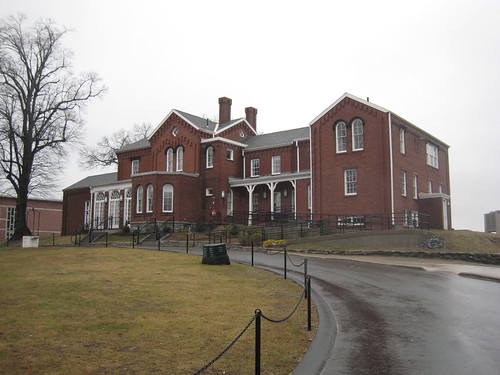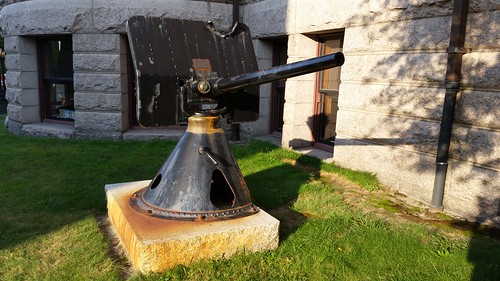Spanish-American War and Lowell
The efforts of the state of Florida to control the history curriculum being taught in its schools have been much in the news lately. With that in mind, it’s reasonable to ask, why does history change over time? Isn’t it just an account of what happened in the past? Historians will say that new information about the past is constantly being discovered, and each new fact requires a reassessment of the existing account. That is certainly true, but the stories of history often say more about the people who are telling them and their own beliefs and political objectives than they do about what happened in the past.
The most prominent example of that are the Confederate monuments which gained so much attention a few years ago and which, in many cases, were removed from public viewing. Those monuments were erected long after the war’s end and were more of an assertion of white dominance in the Jim Crow South than they were a celebration of the figures depicted on them (who were, after all, traitors who revolted against the United States to preserve slavery).
The Smithsonian’s National Portrait Gallery, in an ongoing exhibit I saw during my recent visit to D.C., seeks to clarify the record by presenting a more accurate view of U.S. Imperialism at the end of the 19th century than has been presented in the past. Here are some images, text excerpts, and observations from the exhibit:

1898: U.S. Imperial Visions and Revisions
. . . brings together stories of the United States as well as those of Cuba, Puerto Rico, the Philippines, Guam, and Hawaii which were all brought under the U.S. sphere of influence or sovereignty in 1898.

“The National Portrait Gallery traditionally has focused on representing people from the continental United States and has passed over the historical figures from these islands, but today we aim to tell a more complete story by amplifying those lesser-known voices.”
“This exhibition also points to the past collecting practices of the Smithsonian Institution, which, in alignment with government interests, reinforced empire.”
****
Here’s the panel language about Puerto Rico:
Puerto Rico
Puerto Rico and Cuba were the only remaining Spanish colonies in the Americas after 1826. Puerto Ricans bet on colonial reform, but the Spanish monarchy undercut their aspirations through strict political rule. In 1868, separatists organized an armed insurrection, El Grito de Lares (the Cry of Lares), declaring Puerto Rico independent, but Spanish authorities quelled the revolt. Thereafter, most of Puerto Rico’s political class advocated for autonomy. IN 1897, their struggle bore fruit when Spain granted the island its Carta Autonomica with ample political, administrative, and economic powers. However, on July 25, 1898, the charter was rendered moot when U.S. troops landed in Guanica.
In general, Puerto Ricans welcomed the change of sovereignty from Spain to the United States in 1898. They hoped for more civil liberties, economic prosperity, and modernization. Later, against the backdrop of the First World War (1914-18), the United States granted citizenship to Puerto Ricans and established a popular elected senate.
Puerto Ricans elected their first governor in 1948, and in 1952, a new constitution redefined the island’s status as Estado Libre Asociado, or Commonwealth. The constitution was hailed as a bilateral agreement between Puerto Rico and the United States, but Congress retained full legislative authority over the island – and still does today.
And of course, there’s a Lowell connection, with the first U.S. Governor of Puerto Rico being a native of this city.

Charles Herbert Allen as Asst Secretary of the Navy
Charles Herbert Allen was born in Lowell on April 15, 1848. His father owned and operated a lumberyard in the lower Highlands neighborhood along the Pawtucket Canal. The Allen family’s home was on Middlesex at School, diagonally across the intersection from the School Street Cemetery, where Allen’s parents are buried.
Thomas Allen, the older brother of Charles, served in the Sixth Massachusetts Volunteer Infantry Regiment in the Civil War and was present in Baltimore at the April 19, 1861, riot in which Luther Ladd and Addison Whitney were killed. After the war, Thomas became the city’s Inspector of Milk and Vinegar and tragically died from work-related exposure to dangerous chemicals he encountered while investigating “noxious odors” emanating from the Lowell Gas Light Company’s plant on Western Ave, but that’s another story.
Charles was too young to have served in the Civil War, but that conflict had a profound influence on him because he gravitated towards military matters although he never served in uniform. He was also involved in politics, being elected at a young age to the Lowell School Committee. His major accomplishment was establishing a night school for French Canadian immigrants.
In 1884 he was elected to Congress. He served only a single term but while there he befriended John D. Long who represented the North Shore in Congress. This relationship proved fortuitous because Long became the Secretary of the Navy in the William McKinley administration, and, when the Assistant Secretary of the Navy resigned at the start of the Spanish-American War, Long replaced him with his friend Charles Allen. (The outgoing Assistant Secretary was Theodore Roosevelt who went on to be awarded the Congressional Medal of Honor while commanding the Rough Riders volunteer cavalry regiment).
The Spanish-American war ended in about 90 days with the United States overwhelming the Spanish. The Treaty of Paris, signed in December 1898, granted the United States “protectorates” of Cuba, Puerto Rico, and the Philippines. Charles Allen of Lowell was appointed the first U.S. governor of Puerto Rico.
The Smithsonian exhibit refers to Allen although his photo is not part of the exhibit:

The Executive Council of Charles H. Allen’s Administration (above)
The Foraker Act of April 12, 1900, installed the first civilian government under U.S. rule in Puerto Rico. Section 18 of the Act established an executive council comprising eleven presidentially appointed members. Out of those eleven members, six had to be from the United States, and the remaining five were to be from Puerto Rico.
This photograph shows the executive council under the administration of the first civil governor, Charles H. Allen, who served from May 1, 1900, through September 15, 1900. The picture was presumably taken around June 28, when the council met for the first time at the executive mansion, La Fortaleza. William H. Hunt, standing on the right, was elected president of the council and eventually succeeded Allen as civil governor. The five Puerto Rican members of the council included Rosendo Marienzo Cintron, Manuel Camunas, Jose Celso Barbosa, Andres Crosas, and Jose de Diego.
Closer to home, UMass Lowell has a complicated relationship with Allen. After serving in Puerto Rico and then making a career on Wall Street, Allen retired to Lowell to a beautiful brick house high on a hill on the south bank of the Merrimack with a superb view of the river. There, Allen pursued his passion for painting. This house eventually became part of UMass Lowell’s south campus and is now known as The Allen House. Many of his paintings are on exhibit there. Others are owned by the Whistler House Museum of Art.

The Allen House on UMass Lowell South Campus

View of Merrimack River from terrace of Allen House. The Rourke Bridge is visible in the distance.
In a recent community history project called “Indigenous Past & Presence: The Native American Signage Project” the University sought to clarify the historical record of the relationship of the school and this region with Indigenous people. Governor Allen warrants his own “wayside” sign in this permanent exhibit:

Here’s the text on the sign:
Born in Lowell, Massachusetts, in 1848, Charles Allen was Assistant Secretary of the Navy during the Spanish-American War and the first appointed U.S. governor of Puerto Rico in 1900. Puerto Ricans had achieved self-government from Spain after decades of struggle. By the time of scheduled 1898 elections, self-government disappeared with the advent of the Spanish-American War and colonial domination by the U.S. at the war’s end. As U.S. governor of Puerto Rico, rather than help the island’s residents, many of whom were Native peoples, Allen subsidized U.S. agricultural interests and gained control of the island’s sugar cane. In September 1901, he resigned as governor and headed straight to Wall Street, where he joined the House of Morgan as vice president of the Morgan Trust Company. By 1930, Allen and his partners had converted nearly half of Puerto Rico’s farmland into sugar plantations.

Charles H. Allen grave at Lowell Cemetery
Allen died on April 20, 1934, and is buried in Lowell Cemetery.

Besides his home and his monument at Lowell Cemetery, Allen is responsible for one of the city’s “trophies of war”, a deck gun from a Spanish cruiser that was captured during the Spanish-American War. The gun, pictured above, sits outside the Pollard Memorial Library at the corner of Merrimack and Colburn Streets. Here’s the language of the dedicatory plaque that’s affixed to it:
Taken from the Spanish Cruiser Vizcaya after the Naval Battle at Santiago, July 3rd, 1898, presented by Charles H. Allen, Assistant Secretary of the Navy, June 1899.